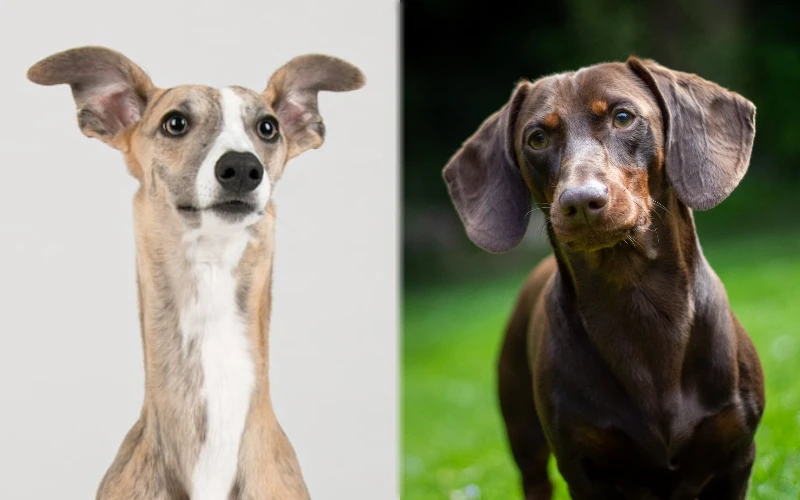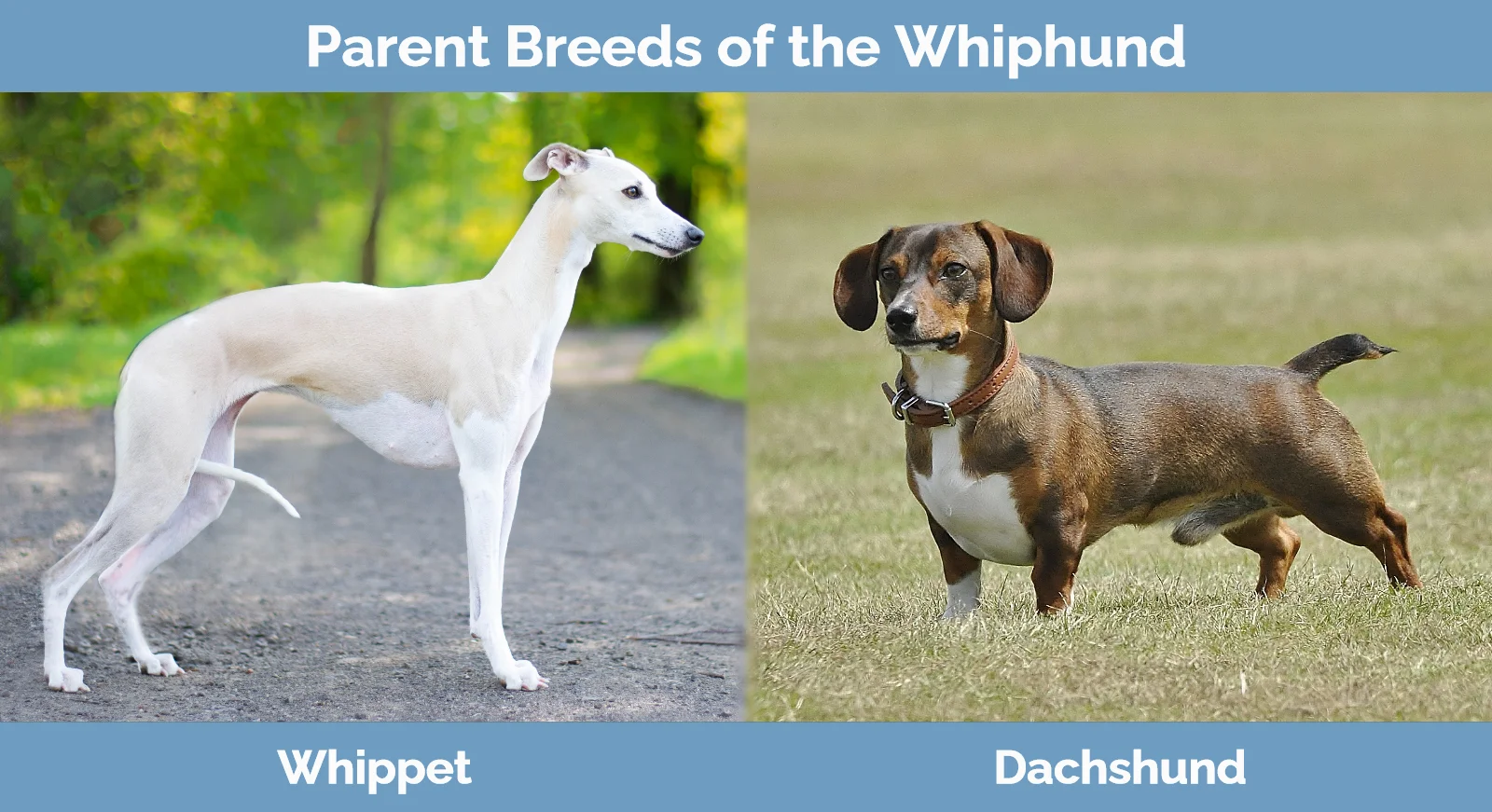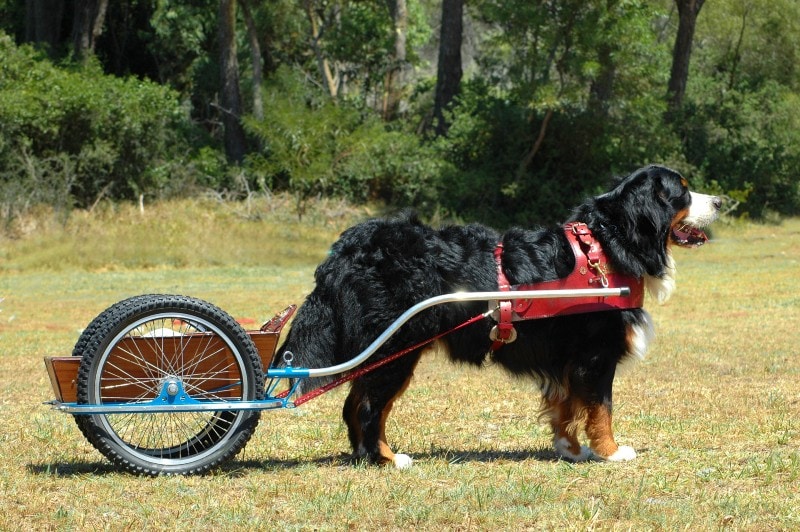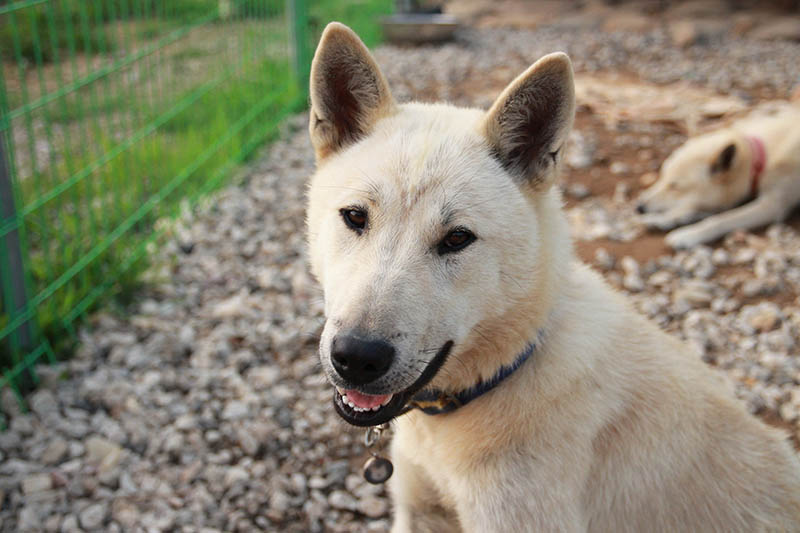Whiphund (Whippet Dachshund Mix): Info, Pictures, Characteristics & Facts
By Lorre Luther
Updated on

Whiphunds are mixes of two popular breeds: Whippets and Dachshunds. Most are small-to-medium-sized, sleek, loving, and active. Whippets are known for their serious speed and are related to Greyhounds. Playful and devoted Dachshunds are best known for their long bodies, short legs, and devoted temperaments. Whiphunds are loving dogs that make wonderful companions.
| Height: | 5–22 inches |
| Weight: | 11–40 pounds |
| Lifespan: | 12–15 years |
| Colors: | Various, including brindle, black, fawn, sable, dapple, brown, and sometimes bi-colored |
| Suitable for: | Families and individuals looking for a devoted companion |
| Temperament: | Sweet, loving, playful, but can be a bit stubborn |
Mixed dogs such as Whiphunds often inherit traits from both parent breeds, making it difficult to predict if any given Whiphund will have the reserved nature of a Dachshund or a Whippet’s more friendly, outgoing personality. However, designer dogs bred from parents with largely overlapping traits also have those core qualities.
Whiphunds are no exception; they’re often gentle, playful, and people-oriented dogs who do generally well around kids and other dogs. Their size and grooming requirements largely depend on the type of Dachshund parent a Whiphund has since Dachshunds come in three coat types and two sizes!
Whiphund Breed Characteristics
Whiphund Breed Puppies
Whiphund puppies are likely to be lively and energetic, as both Whippets and Dachshunds are relatively active breeds. As relatively small dogs, they’ll likely be fully grown when they reach 12 months old. Whiphunds benefit from consistent, early socialization and training.
Finding a Whiphund puppy requires patience since it may be a challenge to locate a breeder. Many established breeders prefer to concentrate on working with purebred dogs, and there are often limited options for those looking to purchase mixed puppies like Whiphunds. However, the number of breeders has steadily increased since the first designer dogs (Labradoodles) hit the scene in 1988. Expect to pay more for a Whiphund than a purebred Whippet or Dachshund, as most designer dogs cost about 25 to 50 percent more than pedigree pets.

Temperament & Intelligence of the Whiphund 🧠
Whiphunds are usually friendly and devoted, much like their parents. Whippets are extremely gentle and easygoing. They’re not usually big barkers or biters. Most love cuddling up with their loved ones, but some can be inclined to nervous behavior.
Dachshunds often love to romp and play, but some can be standoffish when meeting new people. They’re inquisitive canines that can be mischievous, particularly when fun scents are involved. Whiphunds are reasonably intelligent and are often easily motivated by food and love. Some who take after their Dachshund side may be a bit stubborn, which can sometimes present challenges when it comes to training.
Are These Dogs Good for Families? 👪
Whippets and Dachshunds make amazing family pets for similar reasons; they’re both loving, devoted, and deeply interested in being around and interacting with people. Whippets are energetic and happy to be involved in family activities. Both Whippets and Dachshunds are usually up for playtime with the kids.
However, Dachshunds sometimes become overstimulated when playing with children, which can result in biting incidents. Some Whiphunds with Dachshund-like personalities may become particularly attached to one person and be reserved around those they don’t know. But Whiphunds can also have the Whippets’ sunny, open personalities and include everyone in their inner circle.
Does This Breed Get Along With Other Pets?
Whiphunds are likely to get along reasonably well with other dogs since Whippets and Dachshunds are relatively easygoing around canine companions. But some Whiphunds may have trouble around cats. While Dachshunds are generally fine around kitties, some Whippets have difficulty controlling the urge to chase smaller critters.
Whippets were bred to race and hunt, and most have strong prey drives. Whiphunds with more Dachshund-like personalities may be perfectly well-behaved around cats.
Things to Know When Owning a Whiphund
Whiphunds are generally pretty healthy, and most don’t have any special dietary or exercise requirements. But there are several ways to support their health, including having them regularly checked out by a veterinarian and feeding them nutritious food.
Food & Diet Requirements 🦴
Most Whiphunds don’t require anything special when it comes to food. Puppies have higher protein and fat requirements than adult dogs and need to eat special food that delivers all the extra nutrients growing dogs need. Senior pets have reduced caloric needs and benefit from formulations with extra brain and joint support.
Many foods for older dogs include nutrients such as glucosamine and chondroitin for joint health and the amino acid L-carnitine for brain function. Pet foods certified by the American Association of Feed Control Officials (AAFCO) provide dogs with the full range of nutrients their bodies demand.
Exercise 🐕
Whiphunds aren’t likely to have outsized exercise needs, and about 30 to 60 minutes of daily activity should be sufficient. Dogs with more Whippet-like bodies may be interested in more physical activity than Whiphunds with short legs.
Whippets tend to be far more athletic and active, not to mention faster, than Dachshunds! Whippets are serious athletes who are built for speed. Most love a good run but are equally happy to lounge on the couch. However, they require about an hour of daily exercise and enjoy opportunities to take things up a notch with a good run.
On the other hand, Dachshunds aren’t usually that interested in running about; they’re often more inclined to sniff around and dig. Whiphunds with particularly short Dachshund-like legs should avoid climbing stairs, running, and jumping to prevent back injuries.
Training 🎾
Both Dachshunds and Whippets are reasonably smart, and Whiphunds are capable of learning new commands. Dachshunds can be stubborn when learning basic commands and following through in real life, but Whippets tend to be easy to train and happy to learn new tricks in return for treats. Both Dachshunds and Whippets can be extremely sensitive to criticism. Keeping things positive with reward-based training and lots of patience usually produces fantastic results. Short training sessions can help keep things interesting for Whiphunds.
Grooming ✂️
Whiphunds generally don’t require much grooming, but pets with long-haired Dachshund parents sometimes need to be brushed more frequently than their friends with a short or wire-haired mom or dad. They should have their ears regularly checked for excessive wax buildup, particularly Whiphunds with long, floppy ears that reflect their Dachshund heritage.
They need to have their nails trimmed at least once a month, but some benefit from more frequent attention. Also, brushing their teeth at least three times a week or so can help prevent dental problems from getting started.
Health and Conditions ❤️
Because Whiphunds are mixed dogs, they can end up with conditions often found in both parent breeds. Whippets are relatively healthy and live up to 15 years. They’re prone to developing mitral valve problems and often have trouble with bloat. Von Willebrand Disease, a blood clotting disorder, can also be an issue. Whippets sometimes have trouble with their hearing; some are born deaf, and others develop hearing limitations over time.
Dachshunds usually live as long as Whippets, often surviving for 12 to 14 years. Because of their long bodies and short legs, Dachshunds can experience back and spine problems. Like most small dogs, they’re inclined to develop dental problems. Luxating Patella and ear infections can also be issues.
- Glaucoma
- Dental Disease
- Ear Infections
- Bloat
- Von Willebrand Disease
- Deafness
- Mitral Valve Disease
- Back and Spine Problems
- Luxating Patella
- Progressive Retinal Atrophy
Male vs Female
Their size is the biggest difference between male and female Whiphunds, and male dogs outweigh females by a few pounds. Males can sometimes be more affectionate and easygoing than females, who can be slightly more inclined to do their own thing.
3 Little-Known Facts About The Whiphund
1. They Have Greyhound Heritage
Whippets are closely related to Greyhounds. They’re essentially smaller versions of their speedier cousins who have been mixed with dogs such as ratting Terriers. And while Greyhounds are the fastest dogs around, Whippets aren’t far behind. Greyhounds can reach up to 45 miles per hour, and Whippets can hit 35 miles per hour at full tilt.
2. They Have Serious Hunting Chops
Whippets and Dachshunds are incredibly skilled hunters with strong prey drives. Whippets were bred, in part, to chase and bring down rabbits. Dachshunds were known back in the 18th century for their badger-hunting prowess.
3. They’re Mixes of Dogs from Two Different Worlds
Whippets were initially from England and bred to create small hunting and racing dogs that were easy for working families to care for and feed. They were once known as “poor men’s racehorses.” Dachshunds come from Germany and have lived in luxury over the years, Kaiser Wilhelm II of Germany owned two, and Prince Albert, Queen Victoria’s husband, was the proud owner of one.
Final Thoughts
Whiphunds are adorable dogs with purebred Whippet and Dachshund parents. While it can be difficult to tell how mixed dogs will turn out, Whiphunds are likely to be affectionate companions that enjoy spending lots of time interacting with people.
While there can be a bit of variation in size, depending on whether they have a standard or miniature Dachshund parent, most Whiphunds aren’t likely to become very big, so they don’t require much space and won’t cost a fortune to feed.
Whiphunds generally live reasonably long lives when they consistently eat healthy food and maintain appropriate weights. Although they are likely to get along well with other dogs, they often have high prey drives, and those with particularly Whippet-like temperaments may have difficulty controlling themselves around scurrying creatures, such as cats. Whiphunds with more Dachshund-esque personalities can be feisty when romping and playing.
See Also:
- Whipador (Whippet & Lab Mix): Info, Pictures, Characteristics & Facts
- Whipbeagle (Whippet Beagle Mix): Info, Pictures, Characteristics & Facts
Featured Image Credit to: Left – S J, Unsplash | Right – Hayden Patmore, Unsplash












